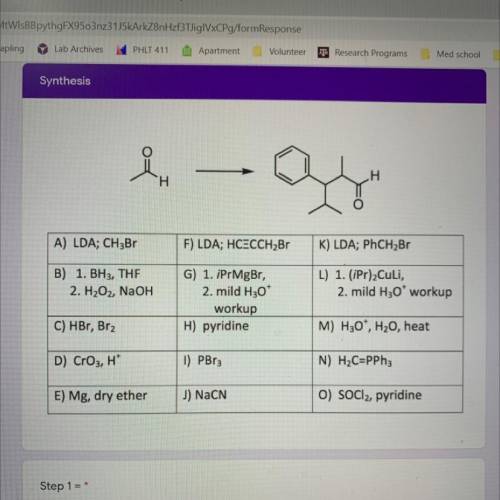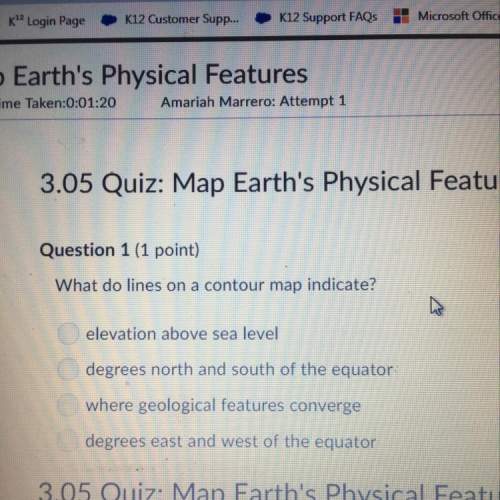Of
H
H
A) LDA; CH3Br
F) LDA; HCECCH2Br
K) LDA; PhCH2Br
B) 1. BH3, THE...

Chemistry, 17.04.2021 05:40 nickthequick
Of
H
H
A) LDA; CH3Br
F) LDA; HCECCH2Br
K) LDA; PhCH2Br
B) 1. BH3, THE
2. H2O2, NaOH
L) 1. (iPr)2Culi,
2. mild H30* workup
G) 1. iPrMgBr,
2. mild H30
workup
H) pyridine
C) HBr, Br2
M) H30*, H20, heat
D) CrO3, H*
1) PBr3
N) H2C=PPh3
E) Mg, dry ether
J) NaCN
O) SOCl2, pyridine


Answers: 1


Another question on Chemistry

Chemistry, 21.06.2019 18:00
Sylvanite is a mineral that contains 28.0% gold by mass. how much sylvanite would you need to dig up to obtain 77.0 g of gold? explain how you got your answer and the steps you took. you
Answers: 3

Chemistry, 21.06.2019 18:50
Suppose you got a low yield of benzoin from your benzoin condensation reaction and thus only have 0.300 g of benzoin to use as the starting material for this reaction. how much concentrated nitric acid should you add? (concentrated nitric acid is 15.8 m). write your answer in the form x.xx ml
Answers: 1

Chemistry, 22.06.2019 09:00
Which explanation is true about what happens to a ray of light when it strikes a mirror? a. a light ray is transmitted toward a mirror at a certain angle. the light ray is then reflected by the mirror at an equal angle but in the opposite direction of the transmitted ray. b. an incident ray strikes a mirror at an angle with a line perpendicular to the mirror. the light ray is then reflected at an angle equal to the angle of incidence but on the opposite side of the perpendicular line. c. a reflecting ray strikes a mirror at an angle with a line perpendicular to the mirror. the light ray is then refracted at an angle equal to the angle of the reflecting ray and on the same side of the perpendicular line. d. an incident ray strikes a mirror at an angle with a line parallel to the mirror. the light ray is then transmitted at an angle equal to the angle of incidence but on the opposite side of the parallel line. you so much! : -d take the time to try and answer correctly.
Answers: 3

Chemistry, 22.06.2019 23:00
Consider the reaction: 2al(s) + fe2o3(s) → al2o3(s) + 2fe(s) the δhf for fe2o3(s) = -824.3 kj/mole. the δhf for al2o3(s) = -1675.7 kj/mole. finish the equation. δhrxn = [(1)( kj/mole) + (2)( kj/mole)] - [(1)( kj/mole) + (2) ( kj/mole)]
Answers: 1
You know the right answer?
Questions


English, 26.05.2021 20:30

Mathematics, 26.05.2021 20:30

Mathematics, 26.05.2021 20:30


Mathematics, 26.05.2021 20:30

History, 26.05.2021 20:30



History, 26.05.2021 20:30

World Languages, 26.05.2021 20:30


Chemistry, 26.05.2021 20:30

Chemistry, 26.05.2021 20:30



Chemistry, 26.05.2021 20:30

Mathematics, 26.05.2021 20:30

Chemistry, 26.05.2021 20:30

Mathematics, 26.05.2021 20:30




